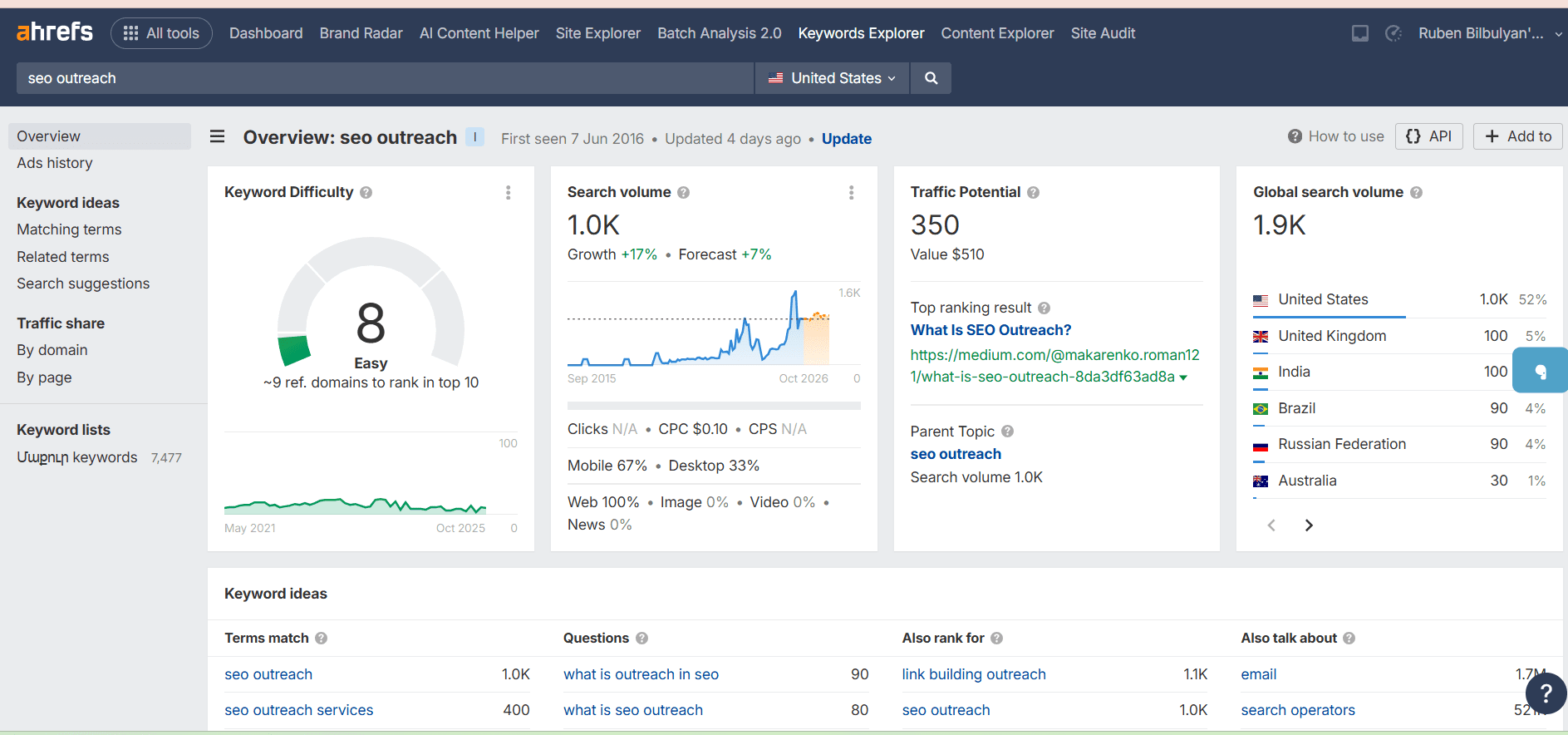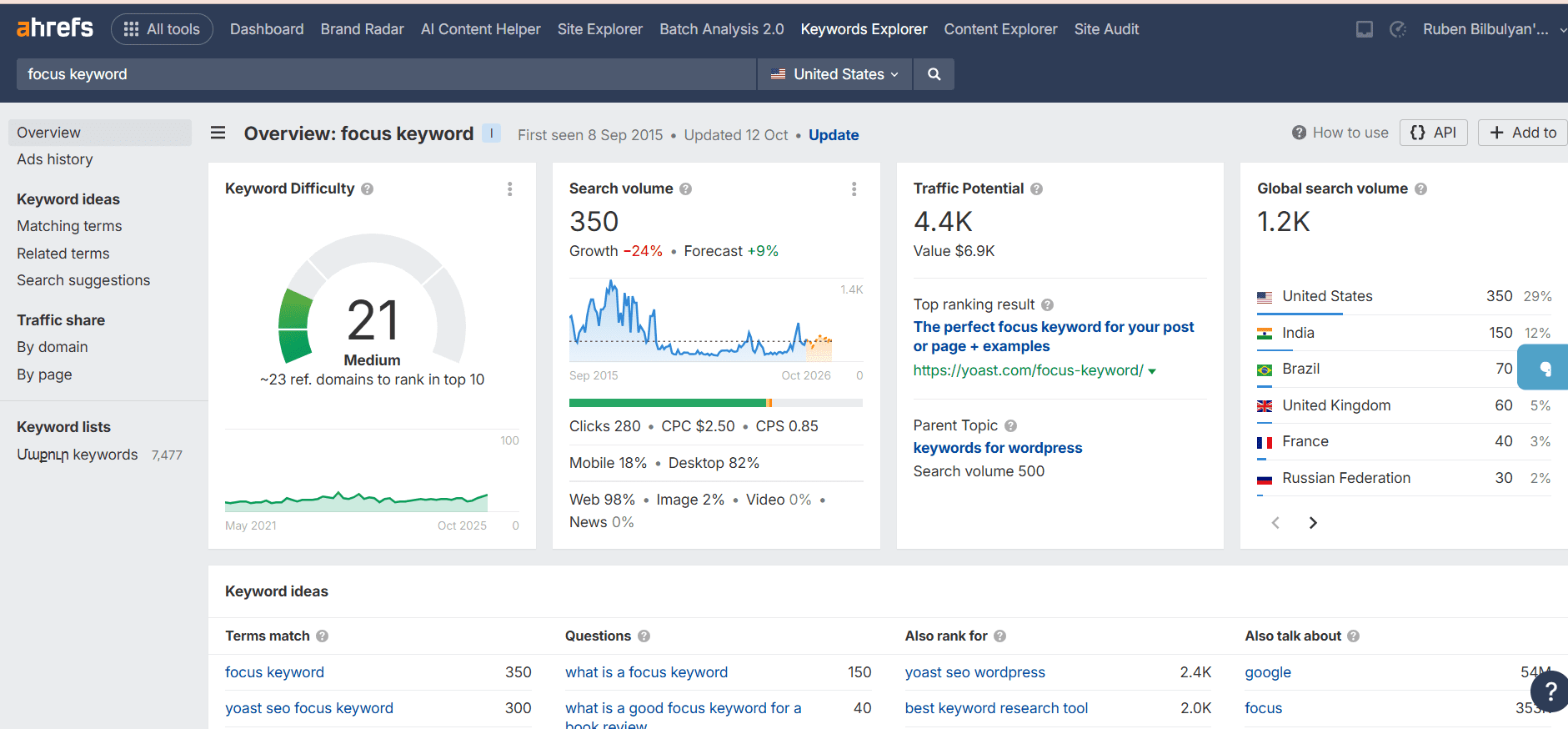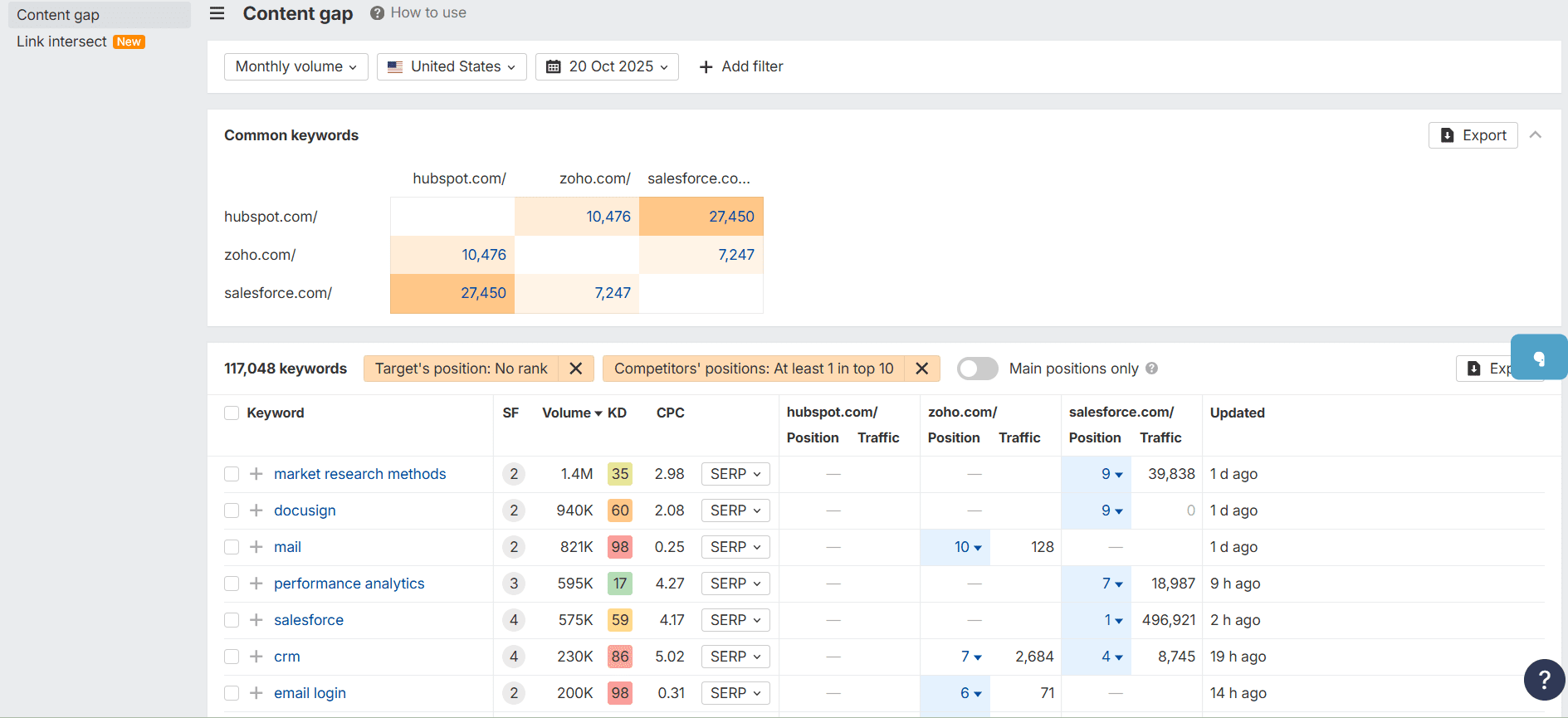You don’t write content for yourself, but for the countless people who should discover and read it, right?
Among other key elements, you need to find the right focus keyword—one with the perfect metrics to drive real results.
But how do you do that? You’re in the right place. In this article, we’ll define what a primary keyword is and share actionable tips on how to find the perfect one for your content.
Let’s get started.
What is The Focus Keyword?
A focus keyword (also known as a target or primary keyword) is the main search term that represents the central topic of your content. It’s the specific phrase you aim to rank for in search engine results.
Focus keywords form the core of your content strategy, guiding both search engines and users to understand what your page is about. The goal is simple: when someone types that term into Google or another search engine, your page should appear among the results.
Why Does a Focus Keyword Matter a Lot?
We should admit that ranking on Google isn’t a piece of cake. Competition is very high, so you need to find the perfect keyword – and here’s why:
- Helps search engines understand your content
Google and other search engines need to figure out what your page is about to rank it correctly. A focus keyword “tells” them what your content’s main topic is, making it easier for them to show your page when people search for related terms.
- Drives targeted organic traffic
When you rank for your focus keyword, you bring in visitors who are actually looking for the information, products, or services you’re offering. These targeted visitors are way more likely to stay on your site and become customers compared to people who just come across your site.
- Improves content relevance
Optimizing around a focus keyword pushes you to create highly relevant, targeted content. This works great for both search engines and readers, since your content directly answers what people are searching for and gives them exactly what they expect.
7 Strategies To Find Perfect Focus Keywords
Now let’s discuss seven helpful tactics on how to find a focus keyword that can bring real results for your website:
Start with Seed Keywords
Seed keywords are basic, broad terms related to your business or industry. They’re your starting point and give your research direction. For example, if you’re focused on SEO, seed keywords might be “backlinks,” “meta tags,” “site speed,” or “keyword research.”
Now, you should take each seed keyword and use research tools to discover more specific variations. One seed keyword can lead you to many related search terms that people actually use.
Generate Ideas with Keyword Tools
Now it’s time to expand your keyword list. Research tools turn your seed keywords into hundreds of specific options you can use later.
Here are some good choices:
Ahrefs – Explore millions of keywords with Ahrefs Keyword Explorer feature and see how hard they are to rank for, plus their search volume and traffic potential.
Semrush – Generate thousands of keyword variations and understand what searchers actually want (informational, commercial, etc.) thanks to Semrush Keyword Overview and Keyword Magic tool.
Google Keyword Planner – This is a free tool from Google. Keyword Planner is great for checking search volume and competition, especially if you’re running ads.
Ubersuggest – This is your budget-friendly pick. Ubersuggest tool gives you keyword suggestions with difficulty ratings without breaking the bank.
But what do these tools show you? Search volume (how many people search for it) and keyword difficulty (how hard it is to rank). This data helps you choose keywords you can actually compete for. Let’s discuss this in the next section more in detail.
Analyze Search Volume (SV) and Keyword Difficulty (KD)
First, let’s understand what these metrics mean.
- Search volume – This is the number of people who type that phrase into search engines each month, showing how popular it is.
- Keyword difficulty – This tells you how much competition there is, or how hard it will be to get your page to appear at the top for that word.
Now let’s understand how you can check KD and SV via Ahrefs.
Step 1: Enter your Ahrefs account.
Step 2: Go to Keyword Explorer and type in your keyword.

Step 3: Select the search engine and country, then click search.
Step 4: Look at the KD score at the top to see how hard it is to rank.
Step 5: Check the SV next to it to see the monthly search volume.
The strategy is to focus on keywords where there’s real interest from searchers, but the competition isn’t too tough – this is the sweet spot for targeting keywords.
In our example, the phrase “SEO outreach” has strong potential, with a search volume of 1.9K and a low keyword difficulty of 8. This makes it an excellent choice for a focus keyword, offering good visibility without much competition.
Analyze Traffic Potential
Traffic potential metric equals real traffic opportunity. Instead of just showing search volume for one keyword, Traffic potential reveals the total monthly traffic the top-ranking page actually gets from all its keywords combined.
Here are the steps you can follow to find Traffic potential in Ahrefs:
Step 1: Enter your keyword in Keywords Explorer.
Step 2: Look at the SERP overview section.
Step 3: Check the Traffic column next to each ranking page.

Step 4: That number is your Traffic potential – the actual monthly visits the top result receives.
Now, when choosing your focus keyword, pay attention to the Traffic potential and find keywords where this number is much higher than the search volume.
In our example, the focus keyword has a global search volume of 1.2K, but its traffic potential is 4.4K, meaning it could attract significantly more visitors than its search volume alone suggests.
Understand Search Intent
Search intent refers to the primary purpose behind a query. There are four main types:
- Informational: Seeking knowledge or instructions (e.g., “how to build backlinks”)
- Navigational: Locating a specific site or page (e.g., “Ahrefs login”)
- Commercial: Checking options prior to making a decision (e.g., “best SEO tools 2025”)
- Transactional: Ready to purchase or commit (e.g., “hire SEO consultant”)
How to quickly verify search intent:
Google your target keyword and analyze the top-ranking results:
- Mainly blog articles or guides? (informational intent).
- Mostly service pages or product listings? (transactional intent)
- Comparison posts or review articles? (commercial intent)
- Brand or company websites? (navigational intent)
But how should search intent guide your efforts? You should match your content format to the intent.
Blog posts and guides suit informational searches (How to Build Backlinks: A Step-by-Step Guide). Service pages and landing pages suit transactional searches (Hire an SEO Consultant | Professional SEO Services).
Keep an Eye to Your Competitors
Stop guessing which keywords to target. Instead, look at what’s already working for websites ranking above you.
Your competitors have already figured out which keywords drive traffic. By analyzing their success, you can steal their best ideas (legally!) and find gaps they’re missing.
Step 1: Open Ahrefs and go to the Content Gap tool.
Step 2: Enter your competitors’ domains in the top field and your website in the bottom field.
Step 3: Review the keywords Ahrefs shows – these are the ones your competitors rank for but you don’t.
 Step 4: Check each keyword’s search volume, keyword difficulty, and traffic potential. Focus on keywords with high traffic, moderate difficulty, and relevance to your target audience.
Step 4: Check each keyword’s search volume, keyword difficulty, and traffic potential. Focus on keywords with high traffic, moderate difficulty, and relevance to your target audience.
Later, you should use these keywords to create new content or improve existing pages to fill the gaps.
Utilize Keyword Clustering
Here’s something that can really simplify your SEO work: keyword clustering.
The idea is simple: Group similar keywords together and target them all with one page, instead of creating a separate page for each keyword.
Here’s why this makes sense:
Let’s say you’re writing about SEO tools. You could create individual pages for “best SEO tools,” “top SEO software,” and “SEO tool comparison.” However, people searching those terms want the same information.
You’ll do way less work by creating one great page instead of ten mediocre ones. That single compelling content will rank better in search engines, pull in traffic from multiple related searches, and give your readers everything they need in one place. It’s a win all around.
So why not write one really good guide that covers everything?
How to actually do it:
Step 1: Group keywords that have similar search intent.
Step 2: Pick the most popular one as your main focus.
Step 3: Write naturally about the topic․ The other keywords will naturally be included when you cover the subject properly.
Best Practices for Using Focus Keywords
You’ve picked your perfect focus keyword. Now here’s how to actually use it without overdoing it.
- Pick one focus keyword
Use just one main keyword per page. This keeps your content clear and focused.
- Use it naturally
Include your keyword in important places without forcing it:
- Page title
- Meta description
- URL
- First paragraph
- Headers (H1, H2, H3
- Image alt text
- Naturally throughout the content
- Avoid keyword stuffing
Don’t overuse your keyword. Write for people first, search engines second. Too many repetitions can hurt your rankings and make your content hard to read.
- Monitor and change
Use SEO tools to track your keyword performance. If it’s not ranking after a few months, try improving your content or choosing a different keyword.
- Add secondary keywords
Use related keywords naturally throughout your content. This helps search engines understand your topic and lets you rank for more searches.
Conclusion
A focus keyword is the backbone of a successful SEO strategy. It guides your content, helps search engines understand your pages, and attracts visitors to your website. By using the strategies in this article, you can find target keywords that balance search volume, competition, and user intent.
Remember, keyword research isn’t a one-time task. Search trends, competition, and opportunities change over time, so regularly review your keyword strategy to make the most of the best opportunities for your website.
